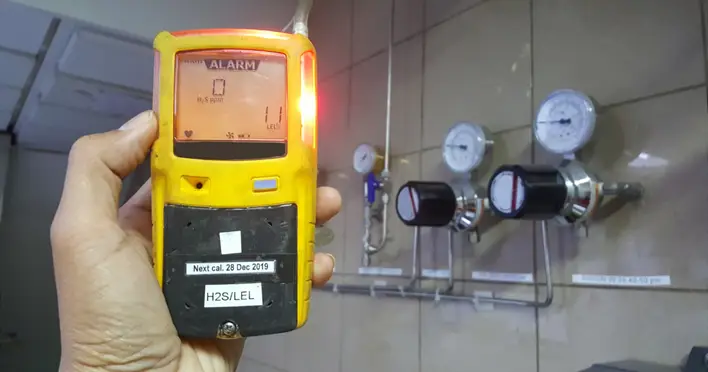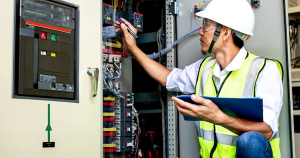What is a burner management system? Learn what it is and how they all work, from its uses, the types, the components, to the benefits it gives to the industries.
What is a Burner Management System (BMS)? This system plays a big role in how industries operate.
It’s made to watch how process burners units start up, run, and shut down.
You’ll see these burners a lot in places like oil and gas, power plants, and factories.
A burner management system helps keep things safe and makes sure the burners work properly.
It also reduces accidental risks, saves time, and helps improve the way things run in the industry.
Having a strong BMS is more than nice, it’s a must-have. Because it helps to maintain safety standards and keeps the whole industry’s performance improved.
To get a strong BMS, it’s best to get it from one of the largest Malaysian industrial boiler and burner suppliers, like T.E.M Combustion.
When you buy any product from T.E.M. Combustion, you are automatically entitled to the privilege of enjoying various solutions, advantages, tools, opportunities, and people.
In this post, we’ll educate you on all key details about a burner management system.
Let’s get started.
What’s the Function of a Burner Management System?
The major function of Burner Management Systems (BMS) is to ensure that the industrial burner units are operated safely.
A BMS automates and controls critical features of burner functions so that compliance with safety regulations can be maintained.
This way, it increases the trust you have in the entire system’s performance.
Let’s talk more about the safety function:
Safety Functions
As mentioned earlier, BMS just ensures that the process burners’ start-up, run, and shut-down processes are safe.
A BMS grants different levels of protection to stop accidents, particularly in Industrial environments where safety is prioritized.
In the entire operation, the BMS constantly checks key factors, like temperature, pressure, and flame status, to make sure they all remain within safe limits.
BMS uses automated safety interlocks, which are a vital feature.
If any unsafe condition is discovered, like loss of flame or excess pressure, without delay, the interlocks will shut down the burner.
The ability for it to respond immediately to dangers reduces the risk of equipment damage or safety hazards.
Also, a BMS has a manual override function that allows operators to intervene directly if necessary.
This provides an extra layer of safety whenever emergencies occur.
Major Components of a Burner Management System
Burner management systems have a lot of key parts that work together so that the burner units can work as they should.
And each component is used to monitor, and when necessary, control the burner’s performance.
Here are the essential elements of a BMS we’ll discuss:
1. Actuators and Valves
Actuators and valves are key parts of a BMS. They’re responsible for enabling the burner’s fuel and air supply.
BMS software sends a message to the actuator so it can allow the flow of gas and flammable air to the burner.
Valves act as barriers, preventing fuel from flowing when unsafe conditions have been identified.
2. Sensors and Detectors
Sensors and detectors provide real data that informs safety and control decisions.
Common types of sensors used in BMS are flame detectors, temperature sensors, and pressure sensors.
Flame detectors ensure that the quality of the flame the burner is emitting remains constant and within safe limitations.
Temperature sensors help to stop overheating and maintain ideal combustion conditions.
Pressure sensors ensure that the gas and air pressures are not outside the standard safe operating limits.

3. Control Logic and Software
The control logic and software are the brains of a burner management system.
They use complex procedures to analyze data obtained from sensors to make useful decisions about burner operation.
These control procedures are designed to ensure safety. The software manages how it’s operated.
4. Human-Machine Interface (HMI)
The Human-Machine Interface (HMI) is like a touchscreen or computer screen that makes it easy for operators to use the BMS.
With the HMI, operators can check the state of the burner, see live data from sensors, and look at any warning messages or system problems.
The screen shows everything in pictures and graphs, so it’s simple to understand what’s going on with the burner and if there’s anything that needs attention.
Types of Burner Management System Modes?
The burner management and combustion control systems work in two ways – the automated and supervised manual modes.
They both offer different benefits depending on the situation.
Understanding them can help you better manage their combustion processes, optimize performance, and maintain high safety standards.
Let’s see how a BMS works with these two modes.
Automated mode
The automated mode is when the BMS follows a set of instructions to control the burner from start to finish, from purging (cleaning the system) to turning it off.
The good thing about this mode is that it doesn’t need much help from people, it reduces the chance of mistakes, and it makes sure safety rules are always followed.
Automated setup works best when everything is running as it should and there’s not much chance of anything going wrong.
Supervised manual mode
For supervised manual mode, the operator can take control of the burner directly when necessary.
This is useful when they want to fix or check the system, adjust things that the automatic system can’t handle, or deal with special or unexpected situations.
Manual mode gives the team more flexibility and control, which is very helpful when unexpected situations occur and the automatic system might not know what to do.

Benefits of Implementing a Burner Management System
Here are a few of the benefits of adding a BMS to your facility.
Enhanced safety
Burner management systems can significantly reduce the risk of accidents in your industry.
It helps keep burners safe by controlling how they work automatically and always checking important things like pressure and temperature.
Because the system does this on its own, it lowers the chances of people making mistakes, which, according to this report, is one of the main reasons accidents happen in factories and other industrial places.
Regulatory compliance
Complying with industry standards and regulations is important for any industrial operation.
And burner management systems help you do just that.
Countless industries are under strict safety and environmental regulations, like the National Fire Protection Association (NFPA) codes/standards and other applicable codes.
Potential cost savings
Installing and maintaining a burner management system has proven to be a beneficial investment for industries in the long run.
A BMS helps keep things safer by stopping accidents before they happen. It also helps avoid expensive damage to equipment and protects the company from getting into legal trouble.
Investing in a BMS usually results in lower insurance premiums because insurers know that automated safety systems come with less risk.
Conclusion
At the beginning of this post, when you asked the question: What is a burner management system?
By now, you get the full picture of what it’s all about.
Burner management systems are vital in ensuring the safe operation of industrial burners. And they are useful in different industries, like oil and gas, power generation, and manufacturing.
If you want to get started with BMS, T.E.M. Combustion can be a helpful partner in the whole process.
We started as an independent company in 2012, and to date, we still offer our customers the best service.
And over the years, our services have been delivered with expertise, experience, and pride.
If you need burners, boilers, blowers, gas control equipment, and combustion equipment, we have quality products to give you.
It’s worth mentioning again that we’re proud to be one of the largest Malaysian industrial boiler and burner suppliers.
So what are you waiting for? Get in touch with us today.







